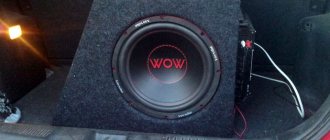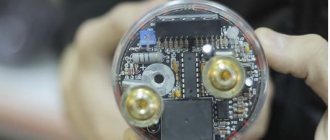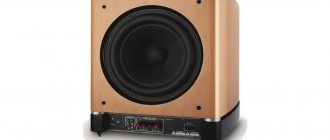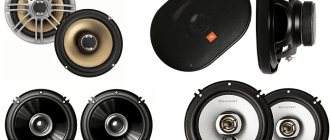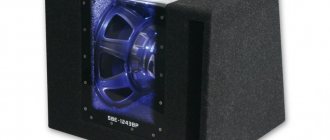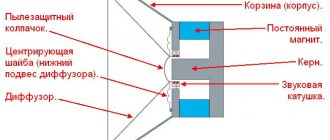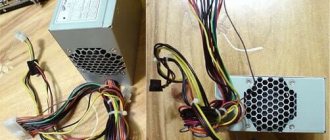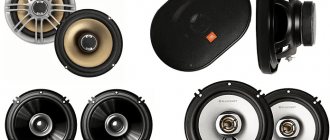A subwoofer is a good addition to a car's sound system. But it’s worth considering that buying an expensive subwoofer does not guarantee high-quality sound, since this device needs to be properly configured. To connect and configure a subwoofer properly, you must not only have good hearing, but also a deep knowledge of car audio theory.
Of course, before setting up a subwoofer in a car, it is best to seek help from specialists, and for those car enthusiasts who want to do it themselves, this article will be useful.
Where to start setting up a subwoofer?
Setting up a subwoofer begins from the moment the box is manufactured. By changing the characteristics of the box (volume, port length) you can achieve different sounds. In this case, you need to know in advance which audio files will be primarily played in the car, as well as which amplifier will be connected to the audio system. When the subwoofer is already supplied in a manufacturer's housing, the flexibility of configuration is, of course, limited, although if you have the necessary knowledge, it is quite possible to achieve the desired sound quality.
One of the important factors affecting sound quality is the amplifier; we recommend that you read the article “How to choose an amplifier.”
Setting up the LPF (lowpass filter) filter
First, you need to set up a low-pass filter (LPF). Every subwoofer today has a built-in LPF filter. The filter allows you to select the threshold at which it begins to block high frequencies, which allows you to naturally mix the subwoofer signal with the signal from other speakers.
Installing a filter, like setting up an active subwoofer, consists of many experiments - there is simply no specific correct “formula”.
The subwoofer is designed to reproduce low frequencies; it cannot sing; this is the task of the speakers. Thanks to the LPF low frequency filter, we can make the subwoofer play bass. You need to make sure that the filter value is not set too high and that the subwoofer does not overlap the woofers of your full range speakers. This can result in over-emphasis on one frequency range (say around 120 Hz) and the speaker sounding unclear. On the other hand, if you set the filter too low, there may be too much difference between the subwoofer signal and the speaker signal.
The playback range of a subwoofer is usually from 60 to 120. Try setting the LPF filter at 80 Hz first, and then test the sound. If you don't like it, adjust the switch until the speakers sound the way you want. On the radio itself, the filter must be turned off.
Setting up a subsonic
Next, you need to activate the infrasonic filter, which is called “sabsonic”. Subsonic blocks the ultra-low frequencies that occur naturally in some songs. You cannot hear these frequencies because they exist below the threshold of human hearing. But if they are not cut, the subwoofer will waste additional energy to reproduce them. By blocking infra-low frequencies, the device will be able to more effectively reproduce exactly those frequencies that are within the audible range. Moreover, in this case, failure of the subwoofer coil due to the accelerated movement of the diffuser is eliminated.
What is Bassboost for?
Many amplifiers also include a Bassboost switch, which can increase the power of the subwoofer by setting a specific frequency. Some motorists use the switch to make the sound more "saturated", although, as a rule, it is used to distribute bass evenly. If you set the switch to the maximum value, the subwoofer may burn out; however, you should not turn off Bassboost completely, because in this case the bass may be completely inaudible.
Setting the input sensitivity (GAIN)
Some motorists do not understand how to properly adjust the input sensitivity. Input sensitivity indicates how much signal can be applied to the input to produce the rated output power. It must be adjusted to normalize the input signal voltage.
It is very important to set the input sensitivity correctly to avoid signal distortion, poor sound quality, or damage to the speakers.
To set "GAIN" you need
- digital voltmeter, which can measure AC voltage values;
- a test CD or file on which a sine wave is recorded with an initial level of 0 decibels (it is very important not to use a weakened test signal);
- instructions for the subwoofer, which indicate the permissible output voltage.
First you need to disconnect the speaker wires from the subwoofer. Next, you need to make sure that the bass, equalizers and other settings on the head unit are turned off to get clear sound. The level of input sensitivity should be minimal.
Make sure the digital voltmeter can read AC voltage and connect it to the speaker terminals on your speakers (you can secure it with a screwdriver). After this, you will have to turn the sensitivity “twist” until the voltmeter shows the required voltage value, which was indicated in the specifications.
Next, you need to feed the recorded audio file with a sine wave to the subwoofer, changing the volume of the audio system from time to time until interference appears. If interference occurs, the volume must be restored to its previous value. The sensitivity is adjusted in exactly the same way. To obtain the most accurate data, you can use an oscilloscope.
Acoustic phase
Most subwoofers have a switch on the back called "Phase" that can be set to 0 or 180 degrees. From an electrical point of view, this is the second simplest thing after the on/off switch. If you set the power switch to one side, then two conductors will carry the signal from the output to the rest of the electronics in one direction. Just flip the switch and the two conductors change position. This means that the shape of the sound will be reversed (which is what engineers mean when they talk about reversing the phase, or switching it 180 degrees).
But what does the average listener get from adjusting the phase?
The fact is that by manipulating the phase switch, you can achieve the highest perception of mid and upper bass while listening. It is thanks to the phase shifter that you can get all the bass you paid for.
In addition, the phase tuning of the monoblock helps to achieve front-facing sound. It often happens that the sound is distributed unevenly throughout the cabin (music can only be heard from the trunk).
Delays
Subwoofers tend to have small delays, and they are directly proportional to the size of the distance. For example, speakers from the American manufacturer Audissey deliberately set a greater distance to prevent this delay. It is worth noting that tuning the amplifier for a subwoofer manually is only possible if there is an external processor or a built-in processor. A sign that the subwoofer is causing delays can be considered delayed bass, which sometimes spoils the sound. The purpose of the delay setting is to achieve simultaneous playback of the subwoofer and the front speakers (the sound should not be delayed by even a couple of seconds).
Setting up the bass fan 30hz
Box detailing
The size and number of parts for building the box, i.e. you can give the drawing to a company that provides wood cutting services (furniture), and after a certain time pick up the finished parts. Or you can save money and make the cut yourself. The dimensions of the parts are as follows:
1) 345 x 428 2 pieces (right and left wall); 2) 345 x 636 1 piece (back wall); 3) 345 x 548 1 piece (front wall); 4) 345 x 358 1 piece (port 1); 5) 345 x 396 1 piece (port 2); 6) 636 x 446 2pcs (bottom and top cover); 7) 345 x 51 3pcs (port roundings) both sides at an angle of 45 degrees; 345 x 51 1 piece one side at an angle of 45 degrees.
Box characteristics
Subwoofer speaker – URAL (Ural) Bulava 12; Box setting – 30Hz; Net volume – 60 l; Dirty volume – 83 l; Port area – 180 cm; Port length 79 cm; Box material width 18 mm; The calculation was made for a medium-sized sedan.
Frequency response of the box
Why is it important to pair subwoofers and midbass correctly?
If the subwoofer is poorly connected to the midbass, the sound will be of poor quality and incomplete. This is especially noticeable at low frequencies, when instead of pure bass you get some kind of nonsense. Sometimes such disastrous scenarios are possible, when the sound from the subwoofer will play independently. In fact, this applies to all types of music, and not just, say, classical or rock music, where “live” musical instruments are played.
For example, in tracks that belong to the EDM genre, which is so popular among young people, the brightest bass is located precisely at the junction with midbass. If they are connected incorrectly, then the low-frequency loud bass will, at best, be less impressive, and at worst, it will be barely audible. Since the amplifier must be tuned to the same frequency, it is recommended to use an audio spectrum analyzer to obtain the most accurate data.
How do you know if you have configured your subwoofer correctly?
If the subwoofer is connected correctly, then people in the car simply cannot hear it, since it should not interfere with the main signal. If you listen to music at low volumes, it may seem that there are not enough bass frequencies. The absence of bass at low volumes is a sure sign that the subwoofer was connected correctly. Of course, there should be no noise, distortion or delay in the audio signal, and it makes no difference what type of design is used. The percentage of bass in each track must be different, that is, the playback must completely match the original track recorded by the producer.
The next article we recommend reading is called “How does a subwoofer box affect the sound?”
Midbass and subwoofer adjustments
As practice shows, the subwoofer setting should be done so that the woofer fits well with the front speakers, there are no frequency dips, etc. In other words, it is not enough to adjust the subwoofer, since the midbass speakers will also require adjustment.
As an example, if the subwoofer is configured to have a 63 Hz top cut, but the midbass is cut 100 Hz at the bottom, then a dip may occur. A different cutoff frequency causes certain frequencies to “stick out” while others are less audible.
For proper tuning, you will need to make the frequency response section smooth by slightly changing the cutoff frequencies LPF and HPF. This is done both by ear and with the help of an RTA analyzer. The main thing is to achieve dense and spacious sound so that there is no “dropout” in frequencies.
